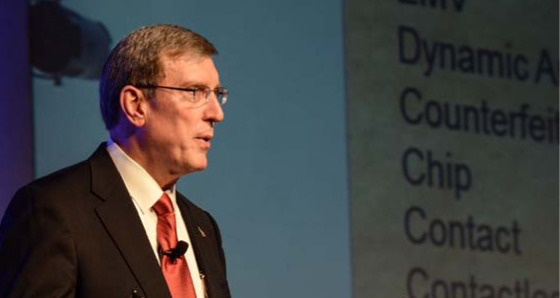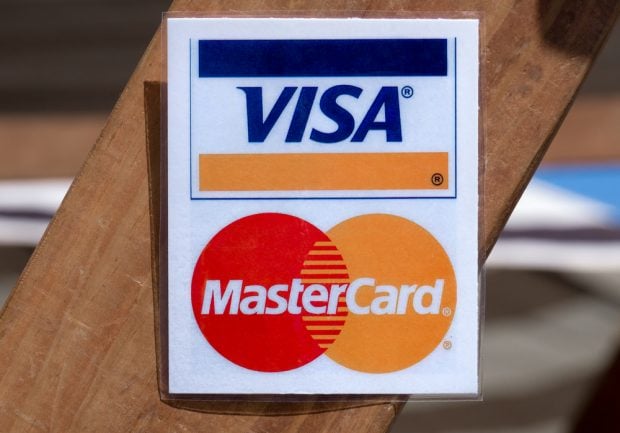 ST. PETERSBURG, Fla. — While the long-termpayments future remains optimistic for credit unions, the 2013annual conference of Card Services for Credit Unions revealed theimmediate payment path continues murky and expensive as ever.
ST. PETERSBURG, Fla. — While the long-termpayments future remains optimistic for credit unions, the 2013annual conference of Card Services for Credit Unions revealed theimmediate payment path continues murky and expensive as ever.
The organization held its conference from April 24-28 at theRenaissance Vinoy Resort.
|“We are definitely at the beginning of a technology shift inpayments,” Patricia Hewitt, director of debit services for theMercator Advisory Services told a conference meeting specificallyset aside for credit union CEOs. But the market has not picked awinner among the new technologies, and until it does, it will behard for financial institutions to know how to move forward, shesaid. It will also be difficult to tell which nonfinancialinstitution innovators will succeed and which will fail, sheadded.
|Hewitt’s message seemed to sum up much of the conference, atleast when it came to discussion of the future.
|When it comes to traditional payment products, for example, theusually reliable credit cards and debit cards face a shift to newsmart card technology and the market changes mandated by changingregulations that still leave many unanswered questions.
|A panel of executives and experts from different parts of thecard industry told the conference that cards outfitted with EMVsmart chips were not likely to make any of their institutions anymoney and should be treated as something of a necessary evil, likeinsurance.
|EMV standsfor Eurocard, MasterCard andVisa and is therecognized international standard for smart chips included onpayment cards.
| Bastian Knoppers, senior vice president for cardpersonalization at FIS, advised the executives that they soon willneed to present their boards of directors with proposals forswitching debit and credit card portfolios over from having cardswith magnetic stripes to cards having EMV chips. Such apresentation is going to have to address questions about why, what,how, when and who, he told the group, and the challenge is thatthere is not a strong case for why.
Bastian Knoppers, senior vice president for cardpersonalization at FIS, advised the executives that they soon willneed to present their boards of directors with proposals forswitching debit and credit card portfolios over from having cardswith magnetic stripes to cards having EMV chips. Such apresentation is going to have to address questions about why, what,how, when and who, he told the group, and the challenge is thatthere is not a strong case for why.
“There is not a good looking business case [for EMV], I canguarantee you that,” Knoppers told the group.
|The problem is that absent a mandate from a government or fromthe major card brands, there is no strong case for paying theadditional costs for EMV cards, at least not for an entire cardportfolio. The cards will significantly cut the cost of one type offraud–counterfeit card fraud–but not necessarily others.
|Cards enabled with EMV chips can cost between two and fourdollars more per card than cards with magnetic stripes.
|Institutions will face liability for card fraud after October2015, and that has provided both card issuers and merchants astrong incentive to adapt to the new technology. After October2015, it will be the party on either side of a transaction which isnot yet enabled EMV technology, whether merchant or retailer, thatwill bear the responsibility for card losses that would haveotherwise been prevented had the new technology been in place.
|CSCU Robert Hackney noted the changes looming and urged thecredit union card executives attending conference to pick up thepace on educating their members and themselves about the changescoming.
|Speaking about the EMV shift, Hackney said that CUs have 30months to get their EMV decisions made and cards issued before thecoming liability shift urged them to appoint someone to take on thetask of monitoring and organizing the shift in theirinstitutions.
|This may not be quite as big as a core processor conversion,Hackney told the meeting, but it is an extremely large and complexchange and it needs to have someone in the organization own it.
|He also urged credit union to stay up to date on paymentschanges because many decisions, particularly in EMV equipped debitcard and in mobile payments, have yet to be made. There are stilltoo many different players that have staked out positions withsignificantly different technologies that still need to shake out,Hackney explained, pointing out the history of great battles suchas between eight track tape and cassette tape and video tape andDVDs Until that shakeout takes place credit unions need to keepinformed about the topic, Hackney added.
|Yet even among the challenges, CSCU still offered some of thesame motivational speeches and examples of card success thatusually characterize its annual conferences.
|Meeting attendees heard from Ken Schmidt, communicationstrategist for Harley Davidson, as he outlined the way, hesuggested, credit unions need to change their communication withmembers to motivate them into loving their credit unions.
|“People almost never make decisions based on logic and facts.That’s not the way the world works,” Schmidt said. “People makedecisions based on emotions. I like you or I don’t like you. I wantthat or I don’t want that. I trust you or I don’t trust you.”
|Credit unions instead need to focus on humanizing theirinteractions with the public, not treating them as customers oreven member, but treating them first as human beings, and thatmeans noticing them and listening to them.
|Another panel of three executives from credit unions that hadstrong credit card success in 2012 agreed that getting seniorcredit union management involved with and committed to the cardprogram early was key.
|Joe Mayhew, consumer loan manager at the 59,000-member $700,000million CoastHillsFederal Credit Union in Lompoc, Calif.; David Throne, vicepresident of internal operations at the 69,000-member $934 millionFoxCommunities Credit Union in Appleton, Wis.
|in Appleton, Wis.; and Julie Brock, marketing publicationspecialist at the 15,000-member $94 million GEMC Federal CreditUnion in Tucker, Ga., described how each of their credit unions allused slightly different strategies to see strong card performancein 2012, but all agreed that getting senior management committed tothe goal early had played a key role.
|Having senior management on board helped the credit unionsmotivate their frontline staff to back the card andenthusiastically offer it members, the executives said, whilesenior management commitment had played an important role in makingsure the different departments of the two larger credit unionscooperated on the shared goal.
|“We were really pleased to see how the different department’sworked together,” said Throne. “Frontline staff was able to engagemembers about the cards in part because of the materials thatmarketing had developed for them to use.”
Complete your profile to continue reading and get FREE access to CUTimes.com, part of your ALM digital membership.
Your access to unlimited CUTimes.com content isn’t changing.
Once you are an ALM digital member, you’ll receive:
- Critical CUTimes.com information including comprehensive product and service provider listings via the Marketplace Directory, CU Careers, resources from industry leaders, webcasts, and breaking news, analysis and more with our informative Newsletters.
- Exclusive discounts on ALM and CU Times events.
- Access to other award-winning ALM websites including Law.com and GlobeSt.com.
Already have an account? Sign In
© 2024 ALM Global, LLC, All Rights Reserved. Request academic re-use from www.copyright.com. All other uses, submit a request to [email protected]. For more information visit Asset & Logo Licensing.









